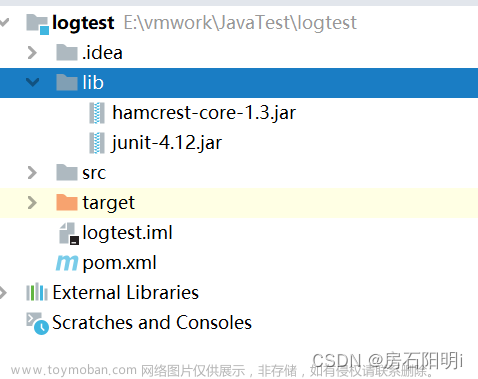昨天把软件测试基础基本上看完了,因为我最近工作问题,需要着重研究下Cunit这个单元测试框架,上午把之前学的基础整理出来了。
刚刚研究了下Cunit除了基本 (Basic)接口,还有三个接口没使用过,我也会经量都尝试下。
下个星期我的任务是写一个墨水屏的驱动,测试的学习估摸着会比较慢了,不会像前面一天一篇道两篇的笔记记录,咱尽量嗷。
CUnit
上面纯属瞎扯淡嗷,接下来本来也想着cv一些简介什么的,想了想算了,几乎每篇文章都有,咱直接附上具有代表性的一个自己看吧。
CUnit首页
CUnit文档手册
CUnit用户手册(中文)
CUnit 2-1-3下载地址
看过学习软件测试(一)C单元测试、测试基本流程、HTML基础这篇文章的应该也看过了其中一部分内容,这篇文章整理汇总了下。
CUnit Windows 安装
cunit在windows下安装:https://blog.csdn.net/godmaycry/article/details/77480549 (已验证可用)
https://cloud.tencent.com/developer/article/1648952 文章中提到以下问题 (但我没遇到错误,以及提到了使用VS Code IDE)
安装完毕把C:\mingw-w64\x86_64-8.1.0-posix-seh-rt_v6-rev0\mingw64\msys\mingw\lib\libcunit.a拷贝到
C:\mingw-w64\x86_64-8.1.0-posix-seh-rt_v6-rev0\mingw64\lib。
(不拷贝在下面gcc或者clang运行中,加入-lcunit参数会提示..lib: can’t find -lcunit的错误)
接下来把C:\mingw-w64\x86_64-8.1.0-posix-seh-rt_v6-rev0\mingw64\msys\mingw\include\CUnit\目录中的所有.h文件
拷贝到C:\mingw-w64\x86_64-8.1.0-posix-seh-rt_v6-rev0\mingw64\include中去。
注意:编译的时候需要连接cunit
示例:gcc -o test test.c -lcunit
CUnit Linux(Ubuntu) 安装
软件源中与CUnit相关的包有:
libcunit1 libcunit1-dev libcunit1-doc libcunit1-ncurses libcunit1-ncurses-dev
使用apt-get install安装即可。
安装步骤
tar -jxvf CUnit-2.1-3.tar.bz2
cd CUnit-2.1-3
libtoolize -f -c -i
aclocal
autoconf
autoheader
automake
chmod u+x configure
./configure –prefix=/opt/cunit
make
make install
cunit安装成功后会生成4个文件夹:doc、include、lib、share。
- doc目录是一些简介以及使用说明。
- include和lib目录中是我们需要的头文件以及库文件。
- share目录中有Automated模式下需要的文件。
一键把cunit测试结果(Basic)和gcov覆盖率结果合并
gcov
gcc -fprofile-arcs -ftest-coverage -o test test.c 编译生成可执行文件(test)和.gcno文件
执行可执行文件./test 生成文件gcda
gcov test.c 生成gcov文件,该文件有代码覆盖率和每行代码执行次数
python代码
main.py
print("Hello World %d " % 2)
flist = ['data1.txt','data2.txt']
ofile = open('list.txt','w')
for fr in flist:
for txt in open(fr, 'r'):
print(txt)
ofile.write(txt)
ofile.close()
bat代码
gcc -fprofile-arcs -ftest-coverage -o test _4_book.c -lcunit
test.exe => data1.txt
gcov _4_book.c => data2.txt
ren _4_book.c.gcov data3.txt
main.py
del data1.txt
del data2.txt
cunit测试代码(拿官方历程改了下)
/*
* Simple example of a CUnit unit test.
*
* This program (crudely) demonstrates a very simple "black box"
* test of the standard library functions fprintf() and fread().
* It uses suite initialization and cleanup functions to open
* and close a common temporary file used by the test functions.
* The test functions then write to and read from the temporary
* file in the course of testing the library functions.
*
* The 2 test functions are added to a single CUnit suite, and
* then run using the CUnit Basic interface. The output of the
* program (on CUnit version 2.0-2) is:
*
* CUnit : A Unit testing framework for C.
* http://cunit.sourceforge.net/
*
* Suite: Suite_1
* Test: test of fprintf() ... passed
* Test: test of fread() ... passed
*
* --Run Summary: Type Total Ran Passed Failed
* suites 1 1 n/a 0
* tests 2 2 2 0
* asserts 5 5 5 0
*/
/* 根据书上程序流图编写 */
#include <stdio.h>
#include <string.h>
#include "CUnit/Basic.h"
/* Pointer to the file used by the tests. */
static FILE *temp_file = NULL;
/* The suite initialization function.
* Opens the temporary file used by the tests.
* Returns zero on success, non-zero otherwise.
*/
/* 第一步 套件初始化 编写init套件*/
int init_suite1(void)
{
if (NULL == (temp_file = fopen("temp.txt", "w+")))
{
return -1;
}
else
{
return 0;
}
}
/* The suite cleanup function.
* Closes the temporary file used by the tests.
* Returns zero on success, non-zero otherwise.
*/
/* 第一步 套件初始化 编写clean套件*/
int clean_suite1(void)
{
if (0 != fclose(temp_file))
{
return -1;
}
else
{
temp_file = NULL;
return 0;
}
}
/* Simple test of fprintf().
* Writes test data to the temporary file and checks
* whether the expected number of bytes were written.
*/
void testFPRINTF(void)
{
int i1 = 10;
if (NULL != temp_file)
{
CU_ASSERT(0 == fprintf(temp_file, ""));
CU_ASSERT(2 == fprintf(temp_file, "Q\n"));
CU_ASSERT(7 == fprintf(temp_file, "i1 = %d", i1));
}
}
/* Simple test of fread().
* Reads the data previously written by testFPRINTF()
* and checks whether the expected characters are present.
* Must be run after testFPRINTF().
*/
void testFREAD(void)
{
unsigned char buffer[20];
if (NULL != temp_file)
{
rewind(temp_file);
CU_ASSERT(9 == fread(buffer, sizeof(unsigned char), 20, temp_file));
CU_ASSERT(0 == strncmp(buffer, "Q\ni1 = 10", 9));
}
}
float bookExample(float x,float y,float z)
{
if ((y>1) && (z==0))
{
x = x/y;
}
if ((y==2) || (x>1))
{
x = x+1;
}
return x;
}
void testBookExample(void)
{
//满足判定覆盖标准的测试用例
CU_ASSERT(2 == bookExample(1,2,1))
CU_ASSERT(1 == bookExample(3,3,0))
//满足条件覆盖标准的测试用例
CU_ASSERT(1.5 == bookExample(1,2,0))
CU_ASSERT(3 == bookExample(2,1,1))
//满足判定/条件覆盖标准的测试用例
CU_ASSERT(3 == bookExample(4,2,0))
CU_ASSERT(1 == bookExample(1,1,1))
//满足条件组合覆盖标准的测试用例
CU_ASSERT(3 == bookExample(4,2,0))
CU_ASSERT(2 == bookExample(1,2,1))
CU_ASSERT(3 == bookExample(2,1,0))
CU_ASSERT(1 == bookExample(1,1,1))
//满足路径覆盖标准的测试用例
CU_ASSERT(3 == bookExample(4,2,0))
CU_ASSERT(1 == bookExample(3,3,0))
CU_ASSERT(3 == bookExample(2,1,0))
CU_ASSERT(1 == bookExample(1,1,1))
}
/* The main() function for setting up and running the tests.
* Returns a CUE_SUCCESS on successful running, another
* CUnit error code on failure.
*/
int main()
{
CU_pSuite pSuite = NULL; //初始化结构体
/* initialize the CUnit test registry */
/* 第二步 初始化注册表 */
if (CUE_SUCCESS != CU_initialize_registry())
return CU_get_error();
/* add a suite to the registry */
/* 第三步 添加套件到测试注册表 */
pSuite = CU_add_suite("Suite_1", init_suite1, clean_suite1);
if (NULL == pSuite)
{ // 如果添加套件失败
CU_cleanup_registry(); // 清理注册表并报错
return CU_get_error();
}
/* add the tests to the suite */
/* 第四步 添加测试套件 */
/* NOTE - ORDER IS IMPORTANT - MUST TEST fread() AFTER fprintf() */
if ((NULL == CU_add_test(pSuite, "test of fprintf()", testFPRINTF)) ||
(NULL == CU_add_test(pSuite, "test of fread()", testFREAD)) ||
(NULL == CU_add_test(pSuite, "test of BookExample()", testBookExample)))
{ // 如果添加测试套件失败清理注册表并报错
CU_cleanup_registry();
return CU_get_error();
}
/* Run all tests using the CUnit Basic interface */
/* 第五步 使用适当的接口运行测试 */
/*
CU_BRM_NORMAL Normal模式-失败和运行摘要打印[default]
CU_BRM_SILENT 静默模式-除了框架错误消息外,不输出任何输出。
CU_BRM_VERBOSE 详细模式——运行详细信息的最大输出。
*/
CU_basic_set_mode(CU_BRM_VERBOSE); // 设置基本接口的运行模式
CU_basic_run_tests(); // 使用基本接口运行所有注册的CUnit测试
/* 第六步 清理测试注册表 */
CU_cleanup_registry();
return CU_get_error();
}
Automated
上面的CUnit的输出方式是Basic(基本)
怎么将输出模式换成Automated?
常规的6个步骤还是不变,只需要在最后那加两个函数:CU_automated_run_tests();
CU_list_tests_to_file();
想了解细节的看文档
开始我尝试Automated的输出方式时生成了两个XML文件,死活显示不出来像官方截图那样的,如何我错误的去查如何查看XML文件以及XML转Markdown等等,到最后我看到了一篇文章,原来是我少了几个文件。
文章中提到
配置使用Automated模式,重新编译运行后会生成CUnitAutomated-Listing.xml和CUnitAutomated-Results.xml两个文件。文件名是在不设定的情况下,使用默认文件名。
把项目生成的CUnitAutomated-Listing.xml和CUnitAutomated-Results.xml,与CUnit安装目录下的CUnit-List.dtd、CUnit-List.xsl、CUnit-Run.dtd和CUnit-Run.xsl,
共六个文件,放到一个文件夹下,拷贝到window系统下,使用IE浏览器打开。
注意,要用IE浏览器进行打开,谷歌浏览器和狐火浏览器都无法正确打开。

CUnitAutomated是XML默认名字
可以通过CU_set_output_filename("");函数更改名字
Test-Listing.xml
Test-Results.xml
Console
跟automated一样,需要在第五步把运行CU_console_run_tests();
然后编译,在cmd中执行生成的可执行文件。
R就是Run全部执行basic(基本)输出
S是就是选择要测试的套件以及测试然后执行,不像R一样全部执行,只执行我们选择的。
L也就是List列表,把当前套件和需要测试的内容显示出来
A也就是Activate,更改test的活跃状态,也就是测不测,不活跃就不测
F就是Failures,查看测试失败的
U就是UP,我现在在suite这一层,Run也只是在当前套件中全部执行,如果up跳到上一层,就是执行全部套件(suite)的test
O也就是option选项,选择未激活的套件/测试被视为运行时失败。
H也就是help帮助啦,也就是对每个字母的解释。
Q也就是quit,退出此系统。文章来源:https://www.toymoban.com/news/detail-491700.html
curses
还有个cures输出模式,需要在linux下才能使用,后续我使用的话会补充。文章来源地址https://www.toymoban.com/news/detail-491700.html
到了这里,关于C语言单元测试框架——CUnit 安装(windows和Linux)及使用的文章就介绍完了。如果您还想了解更多内容,请在右上角搜索TOY模板网以前的文章或继续浏览下面的相关文章,希望大家以后多多支持TOY模板网!









